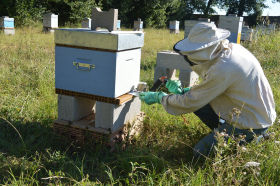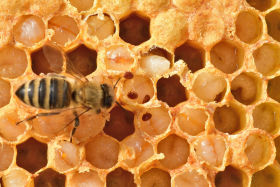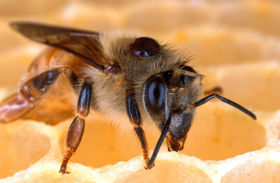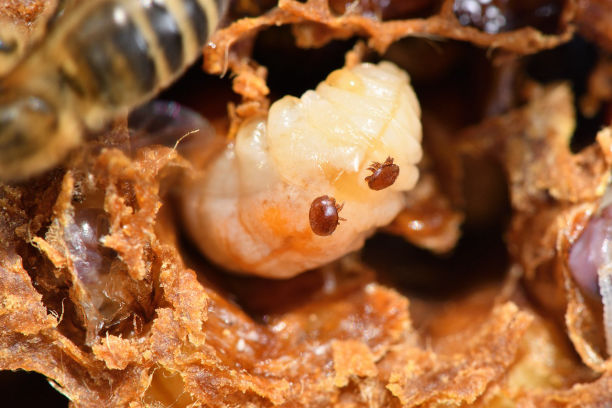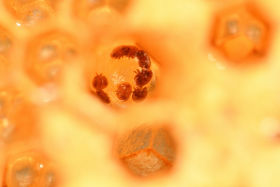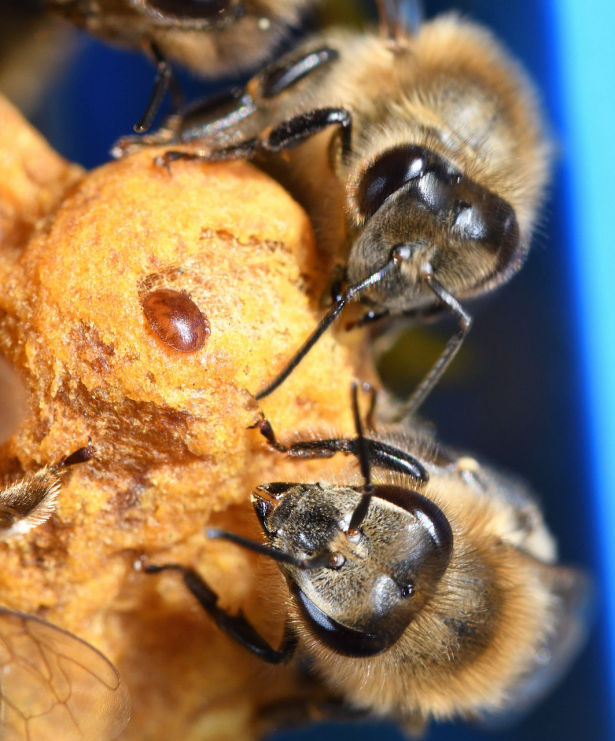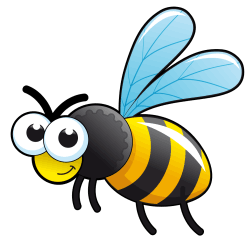Varroa destructor (Anderson and Truman) previously described as Varroa jacobsoni (Oud) is a parasitic mite of adult bees and brood. In the past hundred years or so it has become the most serious pest of Western honeybees across the globe, particularly for the European honey bee Apis mellifera which lacks natural defences to be able to deal with the mite by themselves. When populations overwhelm a colony, it leads to a disease called Varroosis and if left untreated an infested colony will usually die within 2-3 years.
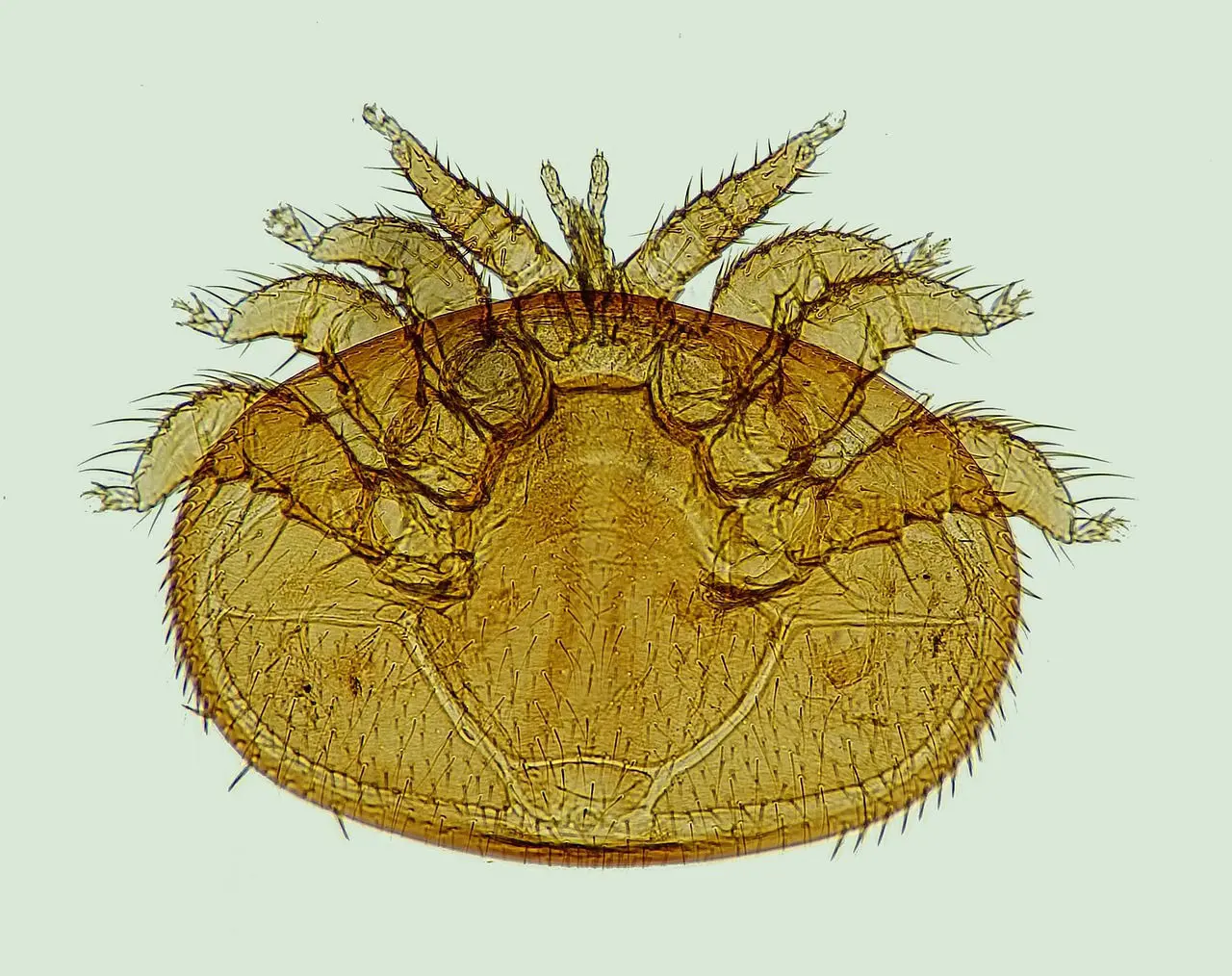
The mite (or mites) invades the open brood cell shortly before capping and lays its own eggs. It prefers drone brood (see later). The hatched mite will then attach itself and tap into the grub when it hatches. When the young bee emerges it will have its parasite passenger feeding on it. This attachment is a source for many diseases/viruses which are responsible for the collapse of the hive if varroa remains untreated. Check out the national bee unit for more information.
Varroa mites double in quantity every four weeks and once your hive hosts more than 1000 mites you will loose your colony. A close look for the visible presence of mites attached to the bees AND for the visible signs of shrunken and deformed wings disease (DWV) will show the problem. Once the infestation gets a hold healthy bees will jump ship and the colony will fail.
See the Varroa calculator on BeeBase and monitor the mite drop over several weeks in the spring / summer using an open mesh floor and sticky paper board. Further advice can be obtained from SASA and hive samples for testing can be sent to: S.A.S.A. 1 Rodinglaw Road, Edinburgh, EH12 9FJ tel:0131 244 8890 www.sasa.gov.uk (packages marked "Bee diseases"). Note the service is free.
There's also some good guidance to treat varroa on Moray Bee Dinosaurs.
VARROACIDES
There are three main chemical treatments for varroa which are easy to apply and can have high success rates of eliminating 95% of mites. They are Apistan, Bayvarol and Apiguard. Apistan and Bayvarol are plastic strips that you hang on the frames between brood comb, Apiguard is a slow release gel that you place on the top of the frames and it works by evaporation as well as contact and the bees eating it. Good practice is to alternate your treatments, this helps reduce the resistance that the mites build up to any one particular chemical. The best time to treat your bees is between harvesting honey and preparing your bees for winter. The aim of the treatment is to protect the last new bees who will over winter and start the colony going again in the spring. It's also a good to treat your bees in the spring, especially if you find that large numbers of mites have survived the winter. If not the mites are likely to increase in numbers rapidly with the increase in brood available.
DRONE BROOD REMOVAL
The mites prefer to lay their eggs in drone cells - so a good way of controlling their numbers is to put a brood frame in the hive with only a half strip of foundation at the top. The bees will build drone cells below this and once they are capped you can cut them out and destroy them. You can do this from April through to July when the bees will happily build lots of drone cells. This is good practice but is not effective on it's own.
OPEN MESH FLOOR
Some mites naturally drop of the bees and comb. If the hive has a solid floor these fallen mites can then climb back up onto the bees. A Beehaus, for example, has an open mesh floor which lets the mite drop safely outside the hive, from which they cannot return.
